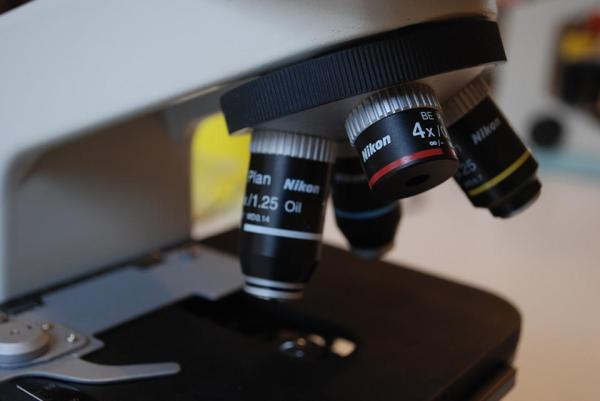
Leukemia is a form of cancer that affects the victim's bloodstream; starting from the bone marrow, it multiplies the number of white blood cells. It's a very serious condition, and it can be fatal for your dog if not detected early enough.
This AnimalWised article will tell you all you need to know about leukemia in dogs, explaining the possible causes, the most common symptoms and the required treatment.
What is canine leukemia?
Leukemia is a type of cancer which affects leukocytes, that is, white blood cells. The bone marrow of dogs which suffer from leukemia produces a large amount of defective leukocytes. These defective white blood cells flood the bloodstream and the bone marrow itself. But, because they're faulty, they're incapable of protecting the body.
As a consequence, the immune system is weakened and the dogs become susceptible to contracting various diseases. As the leukemia progresses, it also affects the production of other blood cells such as red blood cells and platelets, thus causing massive additional problems. Canine leukemia can be acute when it happens quickly and abruptly, or chronic when it happens slowly and gradually.
Causes and risk factors
Many suggestions have been made for the different possible causes of leukemia, among which are genetic factors, exposure to radiation, exposure to chemicals and viral infections. However, the real causes of this disease are still unknown, and it remains to be seen if any of the proposed causes are correct.

What are the symptoms of leukemia in dogs?
Dogs suffering from leukemia can exhibit a wide number of unspecific symptoms since this disease affects the immune system and, as a consequence, has an effect on several organs. The symptoms are usually:
- Fatigue
- Weight loss
- Weakness
- Lethargy
- Loss of appetite
- General discomfort
- Vomiting
- Diarrhoea
- Pale mucous membranes
- Swollen lymph nodes
- Enlarged liver
- Hemorrhages
- Dehydration
- Breathing difficulties and rapid breathing
- Increased heart rate
- Increased frequency and / or volume of urine
How is leukemia diagnosed?
Diagnosis is based on a physical examination, a study of the symptoms and a bone marrow biopsy, and it should always be performed by a vet.
It's necessary to anesthetize the dog in order to perform the biopsy, since it's a complicated and painful procedure. The marrow sample is usually taken from the hip. The sample is then sent to a laboratory, where a cytological study - that is, an analysis of the cells - is conducted to determine if leukemia is present.

What is the treatment for leukemia?
Unfortunately, no cure exists for this disease. However, there are treatments which can help dogs in some cases.
Treatments are generally based on chemotherapy, giving the dog anticancer drugs. These treatments usually have to be repeated periodically. In addition, it's usually necessary to administer antibiotics or other drugs to fight opportunistic infections, and analgesics may be needed to reduce aches and pains.
The prognosis for dogs with chronic leukemia can be favorable if the disease is detected and treated in the early stages. In these cases, dogs may be able to live for a few more years thanks to the opportune treatment, but the disease is still ultimately lethal.
Dogs with acute leukemia usually have a poor prognosis, since the disease is very aggressive in these cases and progresses very quickly.
In either case, sick dogs are very unlikely to survive for a long period of time. For this reason, owners usually prefer to have their dog put down instead of following a costly treatment plan, which can be very difficult for both humans and dogs.

This article is purely informative. AnimalWised does not have the authority to prescribe any veterinary treatment or create a diagnosis. We invite you to take your pet to the veterinarian if they are suffering from any condition or pain.
If you want to read similar articles to Leukemia in Dogs, we recommend you visit our Other health problems category.